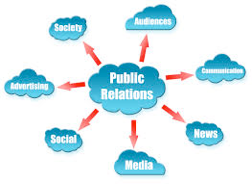Article
PR tips to guarantee a highly regarded practice
In her debut blog, Georgette Pascale shares her must-have PR tips that every doctor must know to ensure a successful practice.
Editor’s Note: Welcome to “Eye Catching: Let's Chat,” a blog series featuring contributions from members of the ophthalmic community. These blogs are an opportunity for ophthalmic bloggers to engage with readers with about a topic that is top of mind, whether it is practice management, experiences with patients, the industry, medicine in general, or healthcare reform. The series continues with this blog by Georgette Pascale, president and chief executive officer of Pascale Communications. The views expressed in these blogs are those of their respective contributors and do not represent the views of Ophthalmology Times or UBM Advanstar.

The main question I get asked as a public relations professional is “what is PR?”
pub·lic re·la·tions
noun
plural noun: public relations
the professional maintenance of a favorable public image by a company or other organization or a famous person.
Read our previous Let's Chat blog: Revenue tips for your practice
When you eat, sleep, live, breathe, and love something this much, sometimes you assume (I know, bad word) others understand the same intricacies of your craft. Public relations is complex, and healthcare PR has even more specificities than other industries thanks to HIPPA laws, FDA regulations, off-label concerns, etc. So here we go!
So how do I define PR?
Contrary to (unfortunate) popular opinion, it’s not about “spin.” Rather, it’s getting the good word out, and utilizing third parties, other than an internal spokesperson. It’s about managing expectations-of the client, the media, and key stakeholders.

It’s also about seamlessly coexisting with a myriad of other related, but very different and valuable promotional tools. PR, marketing, advertising, digital branding, and many other cogs in the wheel work very well together when carrying a common message or theme.
Advertising provides support in a more controlled setting, meaning you can really tweak verbiage to be exactly what you want, as you are paying for that space.
OD-performed surgery unacceptable, dangerous
With editorial, there can (and sometimes, should) be other opinions, other technologies included. If you are perusing the Sunday New York Times for instance, you might pause momentarily to eye the five-carat diamond in a Tiffany’s ad, or you might be more inclined to spend several minutes reading and retaining an article about how Tiffany’s acquires their diamonds.
Both together are impactful and serve an important purpose.
Next: Why every physician needs to understand PR
If you are a physician, industry member, marketing guru, C-suite executive, or technician for instance, you most likely read news from your field, whether an e-newsletter or print trade publication. And you might look forward to them (like the Pascale Communications team does!) to get the latest news.
Similarly, your patients, peers, and colleagues might also want to see the good work you are up to. Always put your media accomplishments online ASAP. Make it happen in real-time. Be the expert.
Visuals are engaging, easy-to-digest, and now a huge part of digital editorial. You can make it easy on the reader to give them sound bites of relevant information.
I truly believe PR helps get the good word out quickly, efficiently, and effectively. All of our client references and referrals cannot be wrong!
Further reading
Top paying states for ophthalmic techs
Worst places to practice this year




